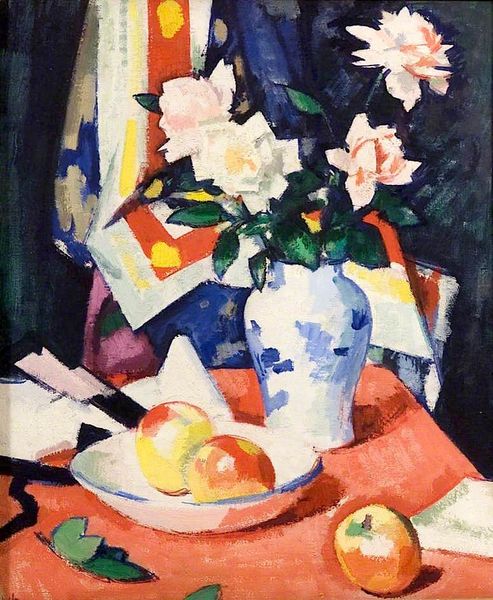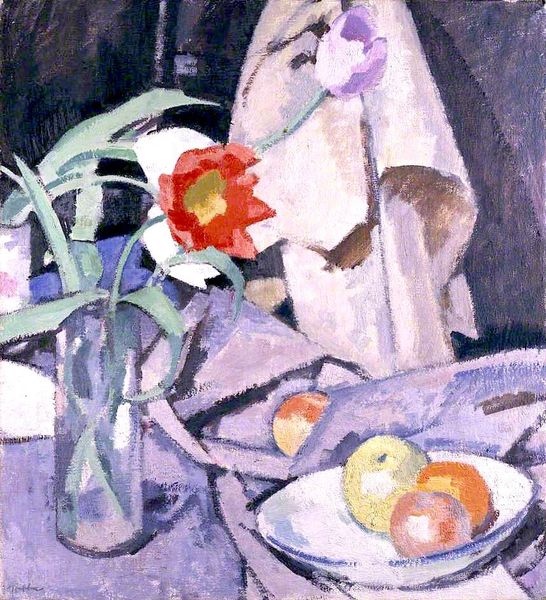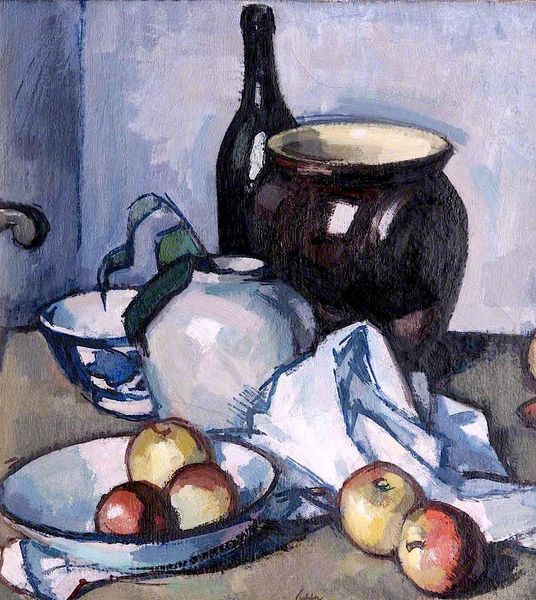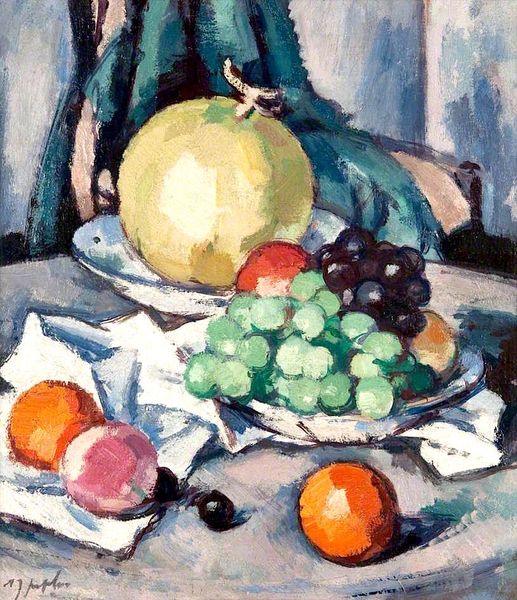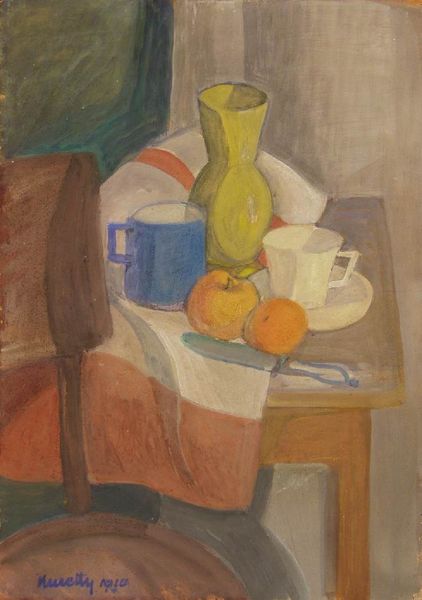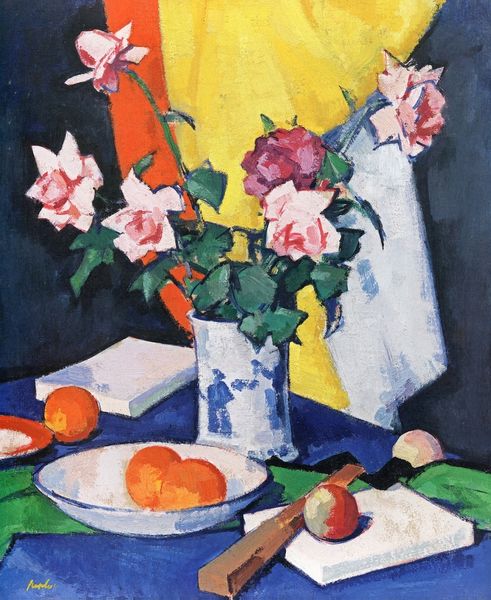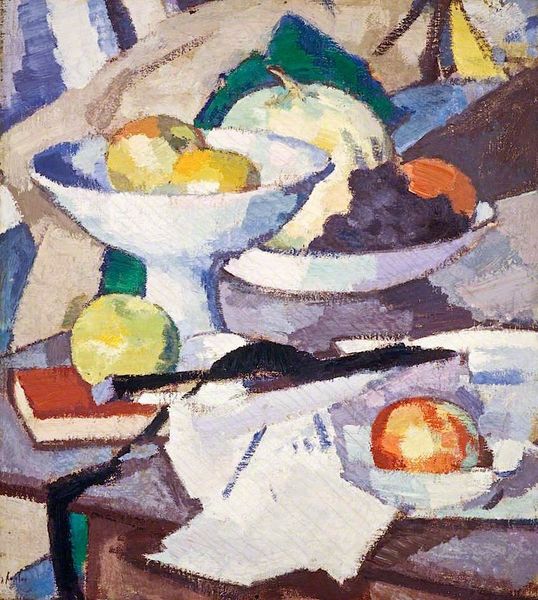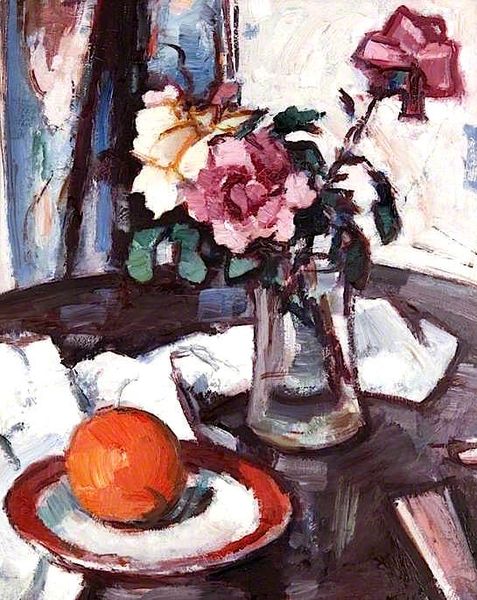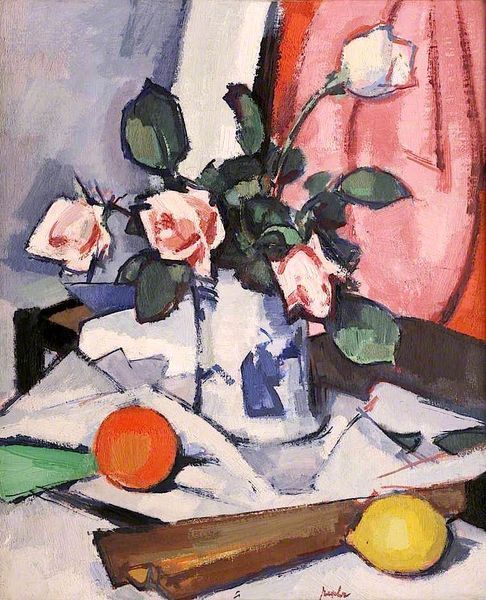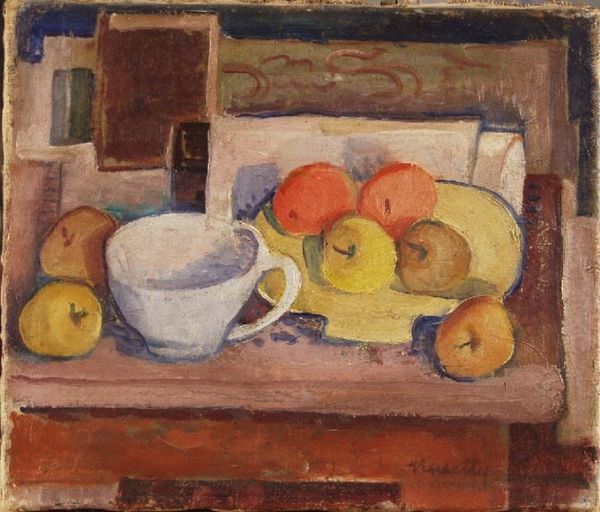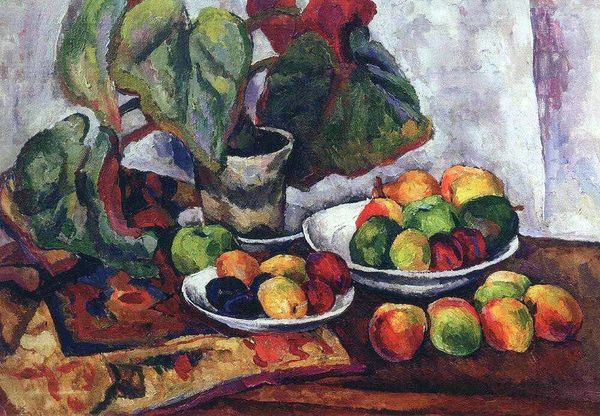
painting, oil-paint
#
painting
#
oil-paint
#
figuration
#
oil painting
#
post-impressionism
Copyright: Public domain
Editor: So, this is “Still Life with Tulips and Oranges,” an oil painting by Samuel Peploe. It feels… deliberately constructed. I mean, the objects seem carefully arranged to create a sense of visual harmony. What strikes you about this piece? Curator: For me, the appeal lies in how Peploe navigates the evolving role of still life in the early 20th century. Considering the impact of movements like Fauvism and Cubism, it’s clear this isn't just about depicting reality. It’s a self-conscious engagement with artistic tradition. Editor: How so? Curator: The choice of everyday objects - the flowers, fruit, porcelain – situates it within a historical genre reaching back centuries. But Peploe’s simplification of forms and use of bold colour – those almost clashing reds against the blues – speaks to a desire to modernize and find new expressive possibilities within that structure. What do you notice about his use of space? Editor: Well, there’s not much depth. The background almost presses against the foreground. It flattens the objects, which makes me think of the influence of early modernism’s flattening of pictorial space. Curator: Exactly! And consider the implications of displaying such a work. How might it have been received in the context of the art market and exhibitions of the time? How does a 'domestic' scene enter into the public sphere? Editor: That’s a good point. I was so focused on the aesthetic qualities, I didn't think about its journey to the gallery. Curator: That journey, the institutions that validated Peploe’s vision – those are crucial pieces of understanding his lasting appeal. The art market, critics, exhibition venues: these shaped the reception and therefore the meaning of his work. Editor: I hadn't thought about that at all. I am going to view still life so differently now!
Comments
No comments
Be the first to comment and join the conversation on the ultimate creative platform.
